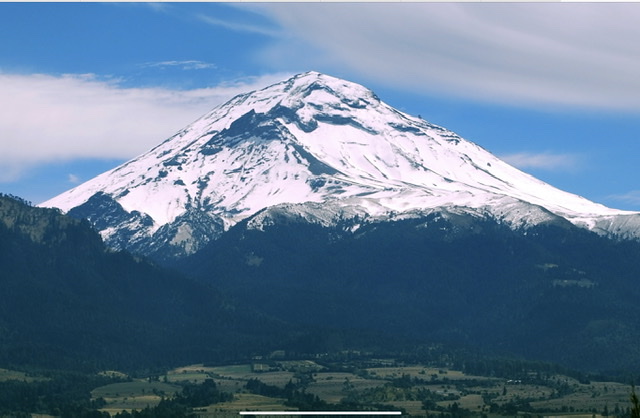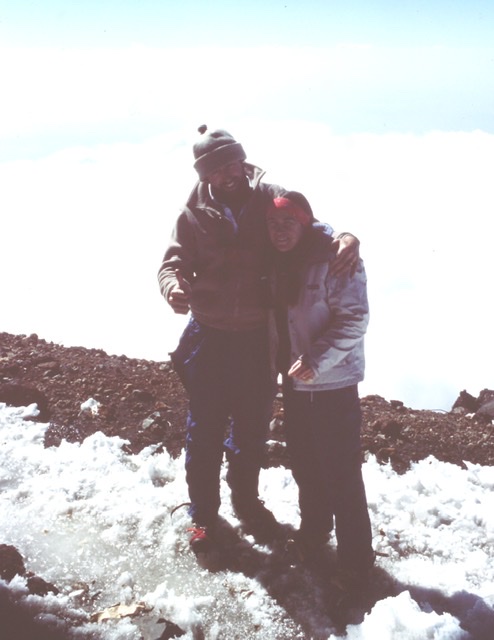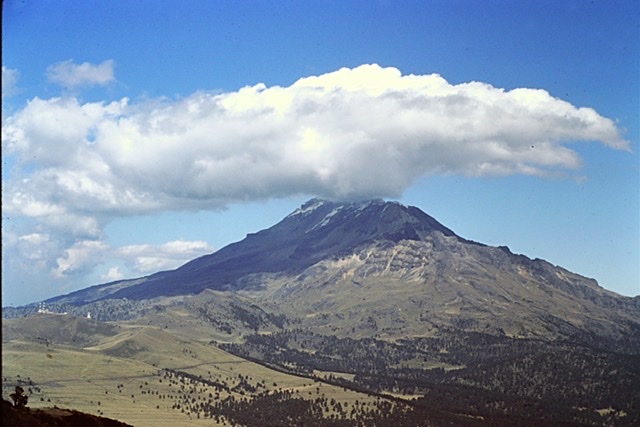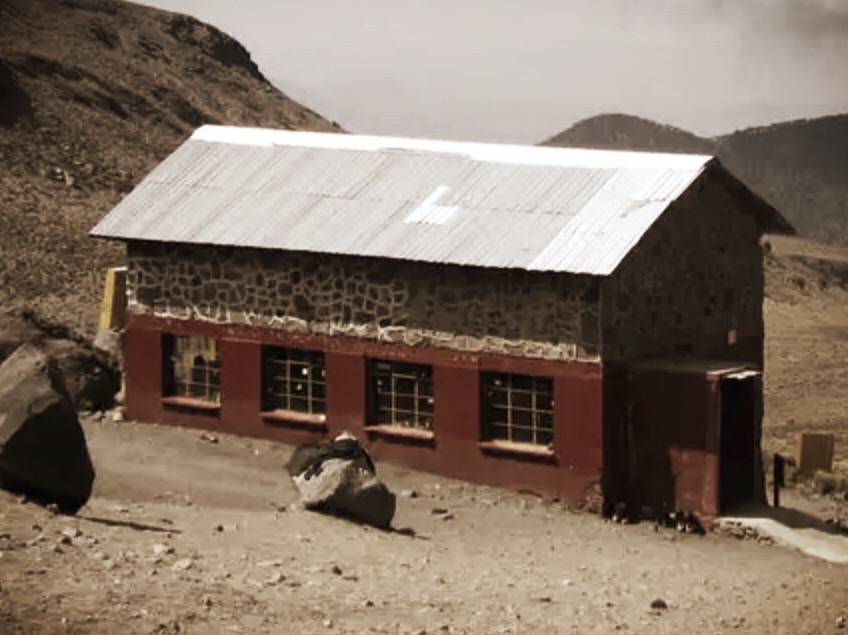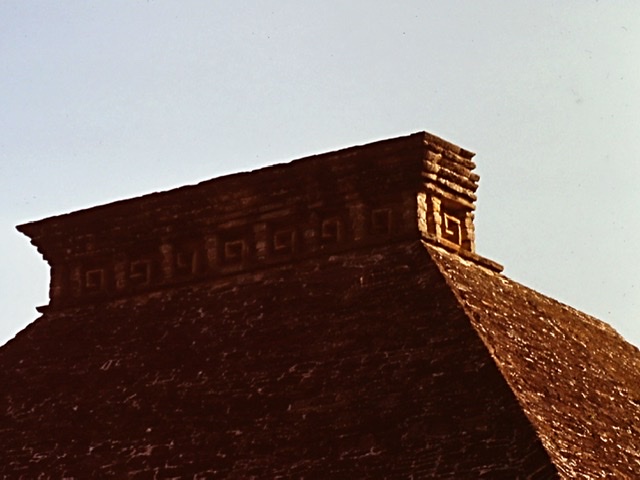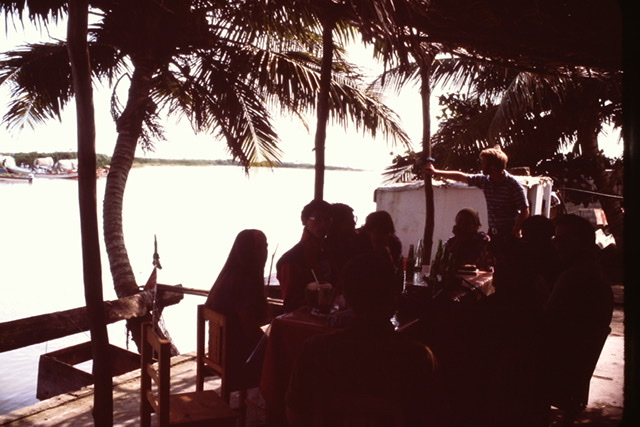In 1985 I was in living in Moscow, Idaho attending law school at the University of Idaho. The University’s Outdoor program offered a trip to Mexico over the holiday break. The trip combined mountain climbing and cultural exploration. Since three of the ten highest mountains in North America are located in central Mexico it immediately caught my interest. Mike Beiser, the associate director of the Outdoor Program was leading the trip. Mike had led our 1985 Denali expeditions and so I knew whatever happened it would be a great adventure. Dana Hanson, my wife at the time, and I signed on.
We departed Moscow on a cold snowy day in 12 seat Ford van. It was 2,687 miles to the start of our climb of the first of the three peaks on our agenda. There were nine of us. It was an interesting and eclectic group. We had climbed together since 1979. Mike, a former Grand Teton National Park climbing ranger, was by far the most experienced climber. Mohamed was a Kenyan and a vegetarian. He kept the van filled with fresh fruit. Janice was not interested in climbing. The rest of the group were climbers with varying climbing experience.
Popocatépetl
Popocatépetl was and still is an active volcano located in central Mexico. It’s elevation of 17,802 feet makes it the second highest mountain in Mexico and the fifth highest peak in North America.
Popo is coupled with Iztaccihuatl by a pass, Paso de Cortez and both are protected by the Itza-Popo Zoquiapan National Park. In 1986 Popo was glaciated but as a result of extensive volcanic activity by 2001 it’s glaciers were no more.
Las Cruces was the standard route on the mountain. The route started at Tlamacas, which had extensive tourist facilities in 1986. Tlamacas was located at 13,000 feet. The route followed a well worn trail east contouring the volcano before climbing to Las Cruces at roughly 16,000 feet. There was a hut and several crosses at this point. The trail ended here.
After our long driving ordeal we arrived at the Tlamacas. It was a weekend and the shops and visitor center were crowded with Mexicans enjoying the blue bird day. Hoping to acclimatize Dana and I decided to hike the trail up to Las Cruces. We were young and in good shape. We should have realized after watching two children throwing up as a result of the altitude that were to anxious. We followed the trail to Las Cruces passing many struggling hikers along the way. At the trail’s end we sat and enjoyed the great view of Ixta. The elevation didn’t seem to effect us. We had to get back to the van and the group so we hustled back down the trail.
Once in the van we both started to get crushing headaches. Even though we descended to a lower elevation at Paso de Cortez where we were camping for the night Dana’s symptoms worsened. Although we originally planned to climb Popo the next day everyone was feeling the effects of the long drive and we postponed the climb for a day.
We spent the day acclimatizing on the historic pass. In 1519, the Spanish invaders, led by Hernan Cortes, crossed, what is now known as El Paso de Cortes, in 1519 between the two volcanoes on his way to invade Tenochtitlan (Mexico City).
On December 28th we were up well before dawn and drove to Tlamacas. We trudged up to Las Cruces. The extra day of acclimatizing worked, especially for Dana who climbing fast with the leading members of the group. The route from Las Cruces basically ascends straight up the slope the 40 degree slope to the crater rim. It was still dark as we started straight up the slope. Suddenly, a softball size rock hit my shin and then continued down the slope. It stung. I yelled up, “you are suppose to fucking well ROCK.” Ironically, it was Dana, one of the most experienced climbers in the group, who had dislodged the rock. “Sorry,” I heard her say.
The climb was uneventful. Although we carried ice axes and crampons there was little need for them. All but one of the group made the summit and no one had altitude related problems.
Iztaccihuatl
Iztaccihuatl was the next peak on the agenda. At 17,159 feet it is North America’s 8th highest mountain. We had a lot of opportunity to admire the peak from our camp on Paso de Cortes and while on Popo. After returning to camp we discussed the whether to climb Iztaccihuatl or drive on to Orizaba. The ground consensus was to skip Iztaccihuatl. The decision was primarily based on the fact that we had reservations Tlachichuca the starting point of our climb. In my opinion Iztaccihuatl is the most esthetic of the three volcanoes.
Orizaba
Pico de Orizabs is the highest Mexican mountain at 18,491 feet and the continent’s third highest. Besides it’s status as the third highest mountain in North America, it is the highest volcanic summit on the continent. It is a dormant having last erupted in the 19th century. The two most prominent volcanoes in them world are Mount Kilimanjaro, which has the most prominence, and Orizaba.
The plan was to start the climb at the Piedra Grande hut and take the standard route to the summit. Mike had made arrangements with Servimont Mountain Guiding for the group to stay one night at its facility in Tlachichuca and then be transported to the hut. The plan started to fall apart as we drove toward Tlachichuca. Janice had hung around Tlamacas while we climbed Popo and had contracted what appeared at first to be a nasty cold bug. With all of us cloistered in the van you can imagine what happened. One by one we started to catch the bug which turned out to be streptococcus.
Dana was one of the first. The Reyes family which owned the guide service, had a doctor in the family. He arrived and provided treatment and prescribed antibiotics. We were able to delay our transportation by a day to give the sick a chance to recover. The next afternoon those who had taken the antibiotics were feeling better. The transportation arrived and we all (with the exception of Janice) rode up the rough road to the Piedra Grande hut. As we bounced along my throat gave me the initial notification that I was the next to come down with strep. By dinner time I was really out of it.
The Piedra Grande hut is large cavernous one room structure with bunks on one side. I curled up in my sleeping bag and tried to sleep while people cooked, talked and packed. I eventually fell asleep. Around 11pm the hut was quiet. Suddenly a large commercial climbing group from Colorado pulled up. They came into the hut oblivious to its sleeping occupants and proceeded to party for the next three hours.
At 5am we were up and getting ready to climb. My head was throbbing, my throat sore and my temperature was high enough that I was occasionally shaking with the chills. Nevertheless, I was determined to make the summit. Once out in the cold air I felt slightly better.
We followed a climber’s trail up into a ravine. After climbing a thousand feet we reached the top of the ravine. I was dragging and feeling worse. The decision that I confronted was a no brainer. I had to turn around and returned to the hut. The rest of the group summited.
Dejected, I returned to the hut to await the return of the team and the arrival of our transportation back to Tlachichuca. I bought antibiotics on our return and soon recovered.
The Ruins of El Tajin
The climbing portion of the trip was over. We then traveled to the Gulf Coast and visited El Tajin along the way. El Tajín is one of Mexico’s largest and most important archeological sites. El Tajín flourished from 600 to 1200 CE. There are numerous ruins of temples, palaces, and pyramids. It is believed that the city fell around 1200 as a result of warfare. The jungle then overtook the ruins hiding them from subsequent generations. Evidently, no European knew of its existence until 1785.
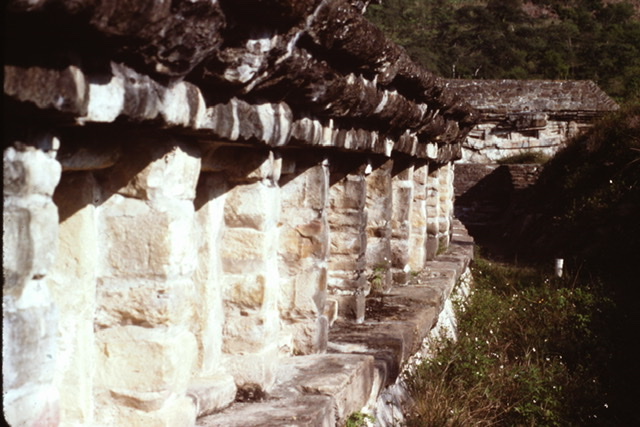
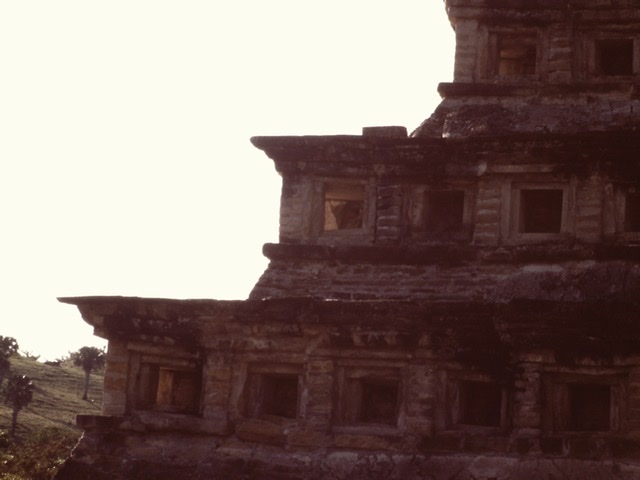
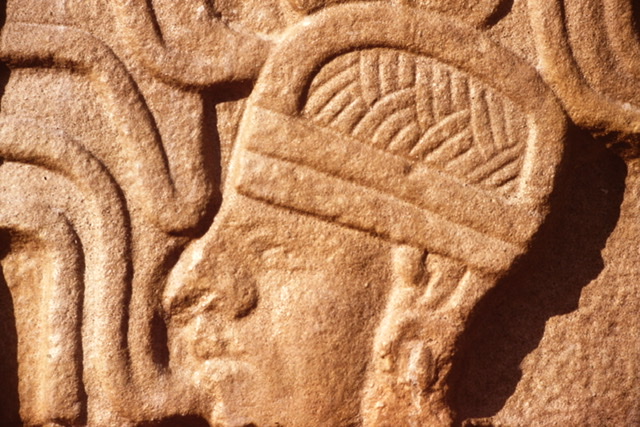
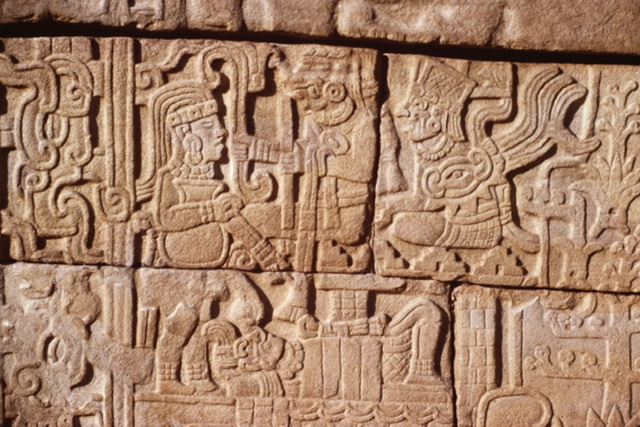
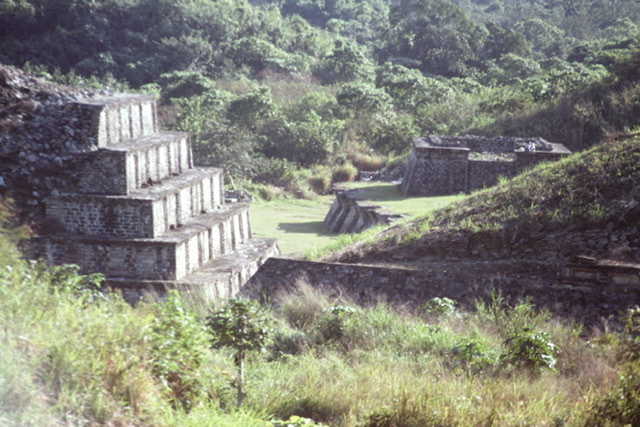
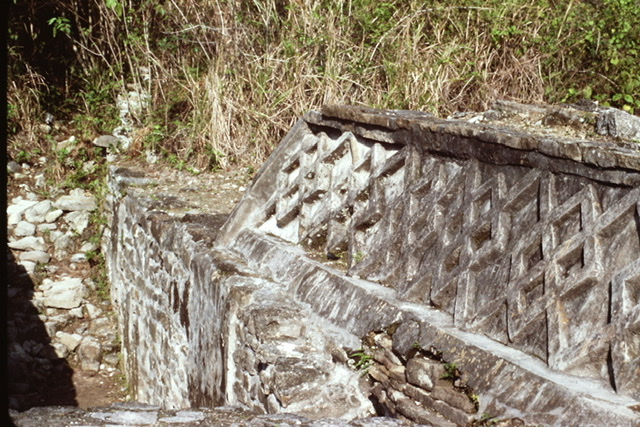
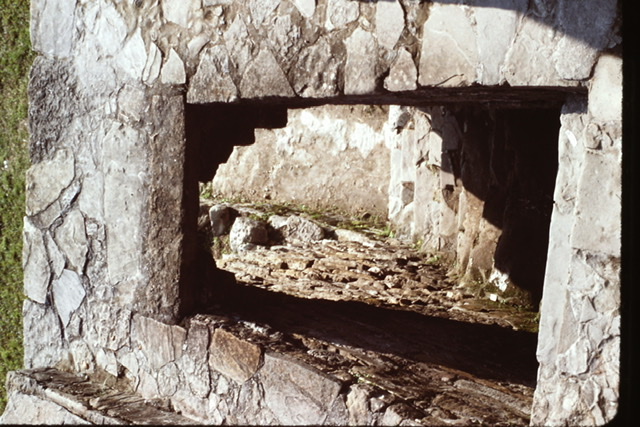
 Veracruz
Veracruz
Veracruz is a large port city on located on the Gulf of Mexico. Cortes founded the city in 1519. During the colonial period it was a wealthly city. In fact it was so wealthy that it was attacked by pirates in the 17th century. Although the Spanish built significant fortifications the city was invaded by both France and the United States.
Because of its importance as Mexico’s principal Caribbean/Atlantic sea port, Veracruz has attracted by hook or crook a mixture of different cultures including Spanish, Native Mexican, and African. In more recent times the city has had an influx of immigrants from Italy and Cuba.
Veracruz’s blend of cultures made it a truly interesting place to visit during the holidays. The indigenous, Spanish and Afro-Cuban which were evident in the food, the music and the holiday celebrations we experienced during our stay.
Take the Long Road Home
From Veracruz it is 2,775 miles to Moscow. It was time to return to Moscow.,We left Veracruz and made it to Tampico by early afternoon. We stopped at a seafood restaurant. I had lived in Costa Rica and travelled extensively in South America where I ate local food without a problem. So, I thought what could be the problem with ordering an oyster cocktail? All I will relate about the experience is that I will not, hopefully, give Montezuma another opportunity to ravage me with his revenge again.
Next: Lua Pele
